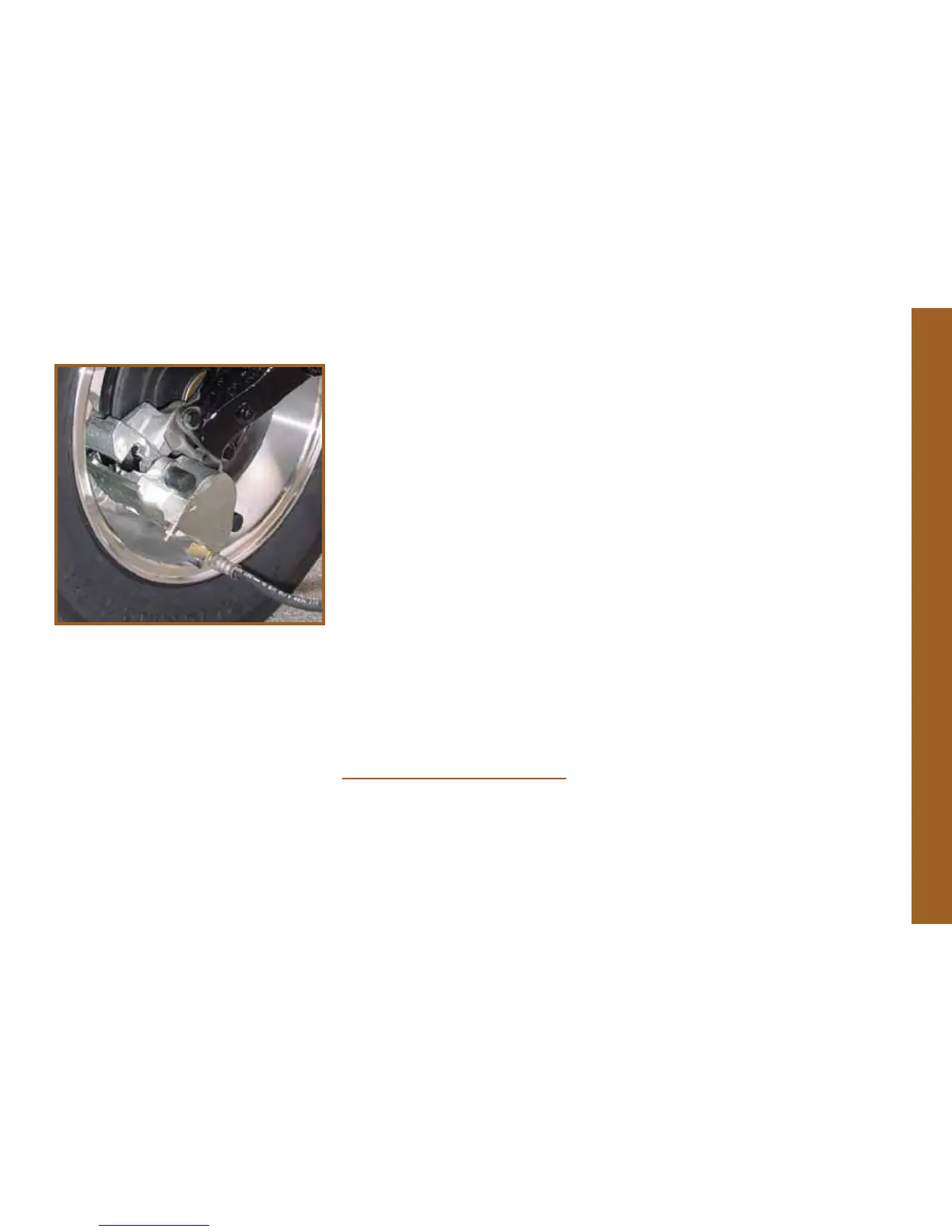expectations, have the tow vehicle and
the trailer brakes checked for proper
operation. The trailer brakes should be
inspected by an authorized MasterCraft
dealer.
• Review the tow vehicle manufacturer’s
recommendations and instructions for
towing.
• If the brakes are hot, before launching it
is a good idea to allow the brakes to cool
rst. The sudden change in temperature
when submerging very hot calipers and
rotors stresses all the parts and could
cause damage.
• If you are unable to back-up, check the
electronically operated back-up valve
on the actuator, which is connected to
the tow vehicle back-up lights. When
energized, the valve opens and pre-
vents pressure build-up in the system.
When it is energized by shifting the
tow vehicle into reverse, you should
hear a noticeable “click” sound. If you
don’t, check that the electrical connec-
tion between the tow vehicle and the
trailer is secure.
• When parking the trailer, be sure the
actuator is fully extended. This position
relieves pressure on the brakes. Cor-
rosion sometimes causes actuators to
freeze in the compressed position. This
causes the brakes to drag and overheat
during subsequent outings.
Recommended Brake Fluid
After only a year, used brake uid in the
average marine trailer may contain as much
as two percent (2%) water. Over time, the
percentage will continue to grow and may
reach as much as eight percent (8%). As
the concentration of moisture increases, a
sharp drop in the uid’s boiling tempera-
ture results. As little as one percent (1%)
moisture can lower the boiling point to
369
o
F/187
o
C.
According to DOT and OEM require-
ments, brand new DOT 3 brake uid must
have a dry (no moisture) boiling point of
at least 401
o
F/205
o
C, and a wet (moisture-
saturated) boiling point of no less than
284
o
F/140
o
C. (Most far exceed these re-
quirements, fresh out of the bottle.) Older
brake uid (about 18 months) with even
three percent (3%) moisture content low-
ers the boiling point to 293
o
F/145
o
C, which
is dangerously close to the minimum stan-
dard requirements.
Water contamination increases the dan-
ger of brake failure because vapor pockets
can form if the uid gets too hot. Vapor dis-
places uid and is compressible, so when
the brakes are applied, the actuator may
completely compress without applying the
brakes!
In addition, water-laden brake uid
promotes corrosion and pitting in caliper
pistons and bores, wheel cylinders, master
cylinders, steel brake lines and reverse so-
lenoids.
MasterCraft Trailers • 2014 MasterCraft Owners Manual Page 7-21
M A S T E R C R A F T T R A I L E R S

